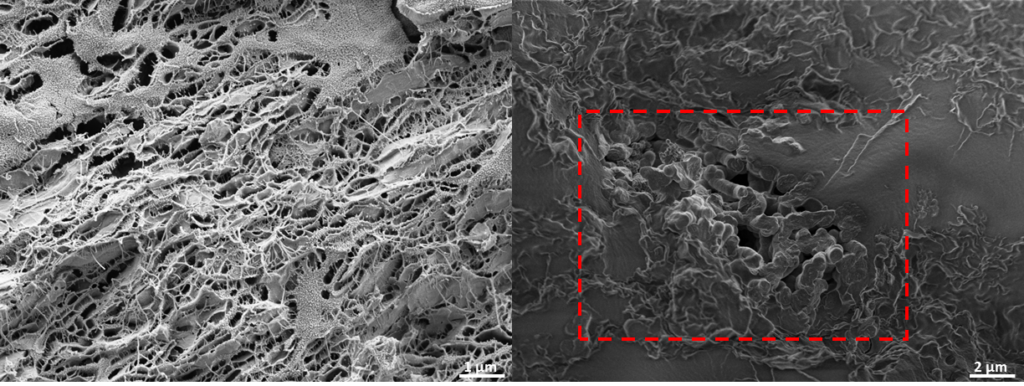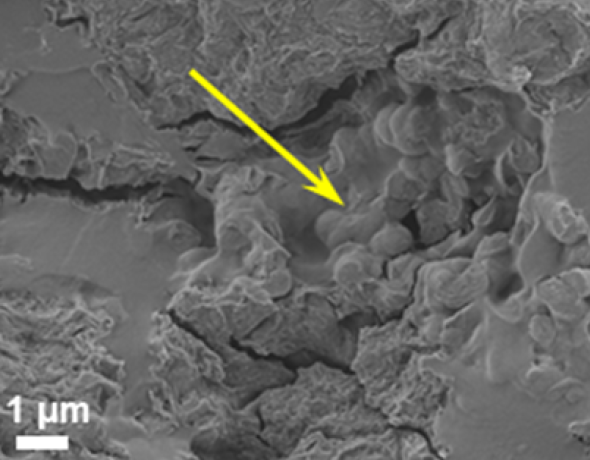Strategies to engineer materials to interact with biological systems continue to look for improved core properties, such as biocompatibility and biodegradability. This is often the basis that allows to devise new medical devices used in surgery, applications in regenerative medicine and tissue engineering, as drug delivery matrices, or as coatings that prevent infections for example.
Recently, a team of researchers at CBIT in collaboration with the Biomaterials and Bioengineering Lab at Catholic University of Valencia have published a paper describing a new polymeric system based on biocompatible polymers and the incorporation of conductive antimicrobial nanoparticles. First author of the paper Mr José Luis Aparicio-Collado explains their work here:
«We have combined two rather different polymers that have interesting properties, so that the right polymeric blend of them presents improved physicochemical properties compared to its pure components. Poly (3-Hydroxybutyrate-co-3-Hydroxyvalerate) or PHBV, is a hydrophobic biodegradable bioactive and piezoelectric material, very interesting for applications related to bone and muscle tissue.
Poly (Vinyl Alcohol), or PVA, is a hydrophilic biodegradable synthetic polymer with great thermal stability and flexibility. These two polymers are widely used in tissue engineering reserarch but to our knowledge have never before been developed into a combined material. We have crosslinked PHBV with PVA to form a semi-interpenetrated polymer network (semi-IPN), that is polymer chains of two types of polymer that are chemically and physically interlocked with each other into a network.
We also have assessed the incorporation of polypyrrole (PPy) nanoparticles to the network with the aim of increasing conductivity. PPy is a conductive polymer which also presents antimicrobial properties and has been proved to enhance cell response in terms of proliferation and differentiation.
Our physicochemical studies reveal a consistent polymeric matrix with compatibility between all constituents and no phase separation with strong interactions between phases. The network also shows enhanced thermal stability and water sorption capacity, which decreases significantly with the PPy incorporation, indicating molecular interactions PPy-hydrogel. These nanoparticles also increase significantly the conductivity of the networks. Structural analysis clearly shows a consistent stable polymeric matrix with embedded PPy nanoparticles.«

More specific applications of this new material are yet to be explored. The team has started to work on characterising aspects of the biological response to the material, and believes it could be useful as an electroactive non-toxic biodegradable biomaterial in applications related to electro-sensitive tissues such as bone, cardiac, muscle and neural tissue. Moreover, another application they want to assess too is its use as the base for pre- and post-surgery dressings to prevent bleedings and infections taking advantage of the properties of the PPy nanoparticles embedded in the material.

